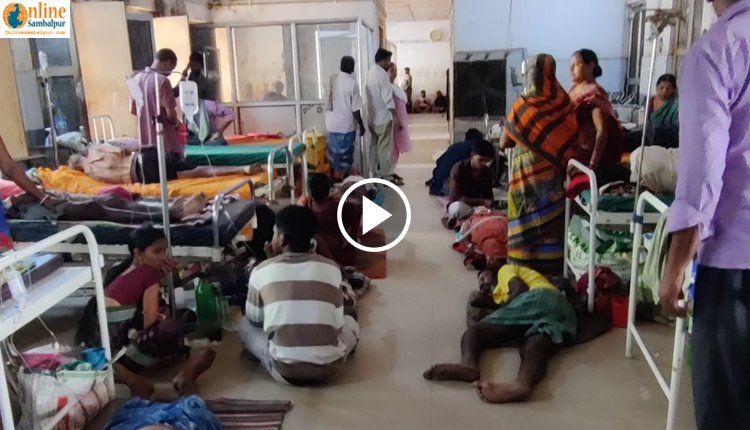Sambalpur: When Will the Casualty Upper Floor Become Operational? Critical Patients Treated Below

Delayed operation of the Casualty Upper Floor
Sambalpur: Despite a decision made weeks ago to open the upper floor of the Vimsar casualty ward to alleviate disorganization and crowding, it has yet to become operational. As a result, critically ill patients are treated on the ground floor due to a lack of available beds, which continues to be a source of concern for intellectuals.
Health Minister’s Review and Committee Formation
Dr. Mukesh Mahaling, the Health Minister, paid a visit to Vimsar and, after reviewing the situation, directed that a committee be formed to address the issues. At its first meeting, the committee decided to use the upper floor of the casualty ward to alleviate crowding. However, the delay in implementation has led to dissatisfaction among patients and families.
Online Sambalpur Is Now On WhatsApp!
Join us for the latest news updates delivered directly to your WhatsApp.
Subscribe Us On YouTube!
Join us for the latest news updates and video content delivered directly to you.
Current Utilization of Casualty Ward Beds
Notably, the casualty ward includes 56 beds on both the ground and first floors. Despite the fact that the upper floor is empty, the ground floor only has 25 to 30 beds in use. As a result of the high patient volume, critically ill patients referred from various locations are frequently seen being treated on the floor. This situation causes inconvenience not only for patients and their families but also for doctors and paramedical personnel.
Committee’s Directive and Delayed Implementation
Given this scenario, the newly formed committee decided at a meeting on the third of the month that if beds on the ground floor were unavailable, patients should be transferred to the upper floor for treatment right away. However, six days after issuing this directive, patients are still being treated on the floor, while the upper floor is unoccupied.
Speculated reasons for non-implementation
This failure to implement is attributed to the committee’s lack of foresight or a lack of commitment and negligence on the part of departmental officials, as widely discussed.






